CIQUIBIC-CONICET-UNC
Contact : +54 351 5353855
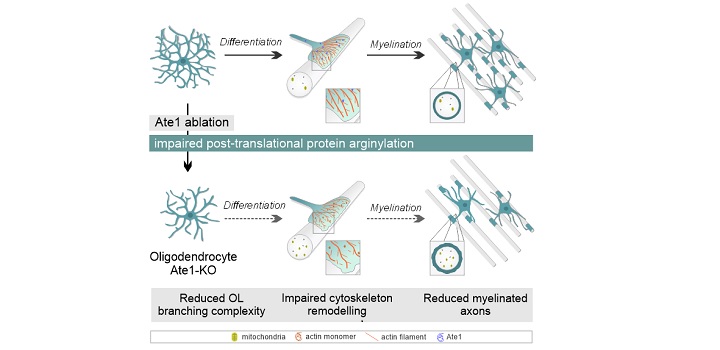
Addition of arginine (Arg) from tRNA can cause major alterations of structure and function of protein substrates. This post-translational modification, termed protein arginylation, is mediated by the enzyme arginyl-tRNA-protein transferase 1 (Ate1). Arginylation plays essential roles in a variety of cellular processes, including cell migration, apoptosis, and cytoskeletal organization. Ate1 is associated with neuronal functions such as neurogenesis and neurite growth. However, the role of Ate1 in glial development, including oligodendrocyte (OL) differentiation and myelination processes in the central nervous system, is poorly understood. The present study revealed a peak in Ate1 protein expression during myelination process in primary cultured OLs. Post-transcriptional downregulation of Ate1 reduced the number of OL processes, and branching complexity, in vitro. We conditionally ablated Ate1 from OLs in mice using 2′,3′-cyclic nucleotide 3′-phosphodiesterase-Cre promoter (“Ate1-KO” mice), to assess the role of Ate1 in OL function and axonal myelination in vivo. Immunostaining for OL differentiation markers revealed a notable reduction of mature OLs in corpus callosum of 14-day-old Ate1-KO, but no changes in spinal cord, in comparison with wild-type controls. Local proliferation of OL precursor cells was elevated in corpus callosum of 21-day-old Ate1-KO, but was unchanged in spinal cord. Five-month-old Ate1-KO displayed reductions of mature OL number and myelin thickness, with alterations of motor behaviors. Our findings, taken together, demonstrate that Ate1 helps maintain proper OL differentiation and myelination in corpus callosum in vivo, and that protein arginylation plays an essential role in developmental myelination.
Authors:
Article:
Palandri A., Bonnet L.V., Farias M.G., Hallak M.E:, Galiano M.R.. Glia. October 2021. https://doi.org/10.1002/glia.24107
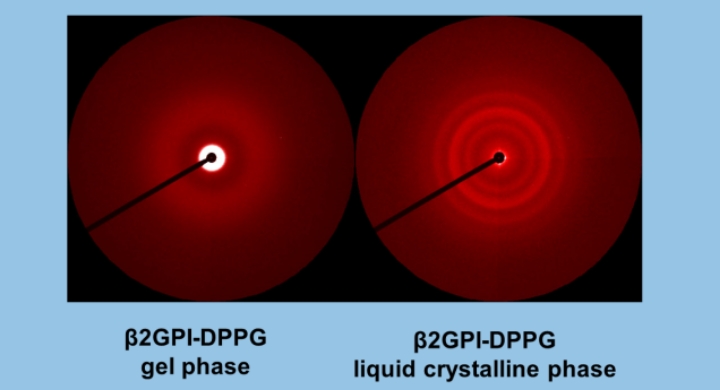
Rafael G. Oliveira, Mariana Paolorossi, Leide Passos Cavalcanti, Antonio Malfatti-Gasperini, Guillermo G. Montich
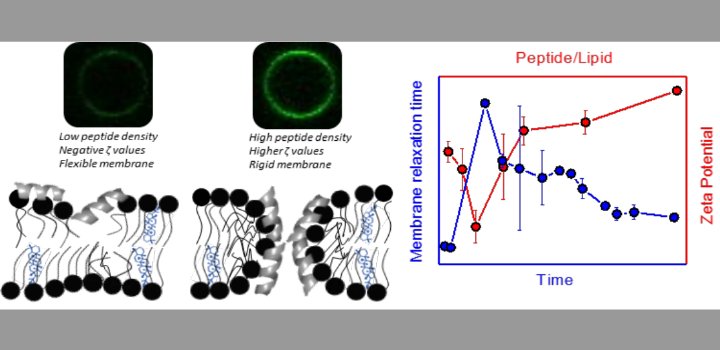
) for DP-containing LUVs showed a complex behavior at increasing peptide concentration. The effect of the peptide on membrane elasticity, investigated by nanotube retraction experiments, showed that peptide addition softened all membrane compositions, but membranes with DP got stiffer at long times. Considering this, and the ζ results, we propose that peptides accumulate at the interface adopting different arrangements, leading to a non-monotonic behavior. Possible correlations with cell membranes were inquired testing the antimicrobial activity of Polybia-MP1 against hopanoid-lacking bacteria pre-incubated with DP or CHO. The fraction of surviving cells was lower in cultures incubated with DP compared to those incubated with CHO. We propose that the higher activity of Polybia-MP1 against some bacteria compared to mammalian cells is not only related to membrane electrostatics, but also the composition of neutral lipids, particularly the hopanoids, could be important.
Keywords: Targeting of AMPs, Bacterial resistance, Membrane dynamic elasticity, Optical tweezers, Lytic activity, Zeta potential
Authors:
Article:
Alvares D.S, Monti M.R., Ruggiero Neto J., N Wilke. BBA Advances Volume 1, 2021, 100002. https://doi.org/10.1016/j.bbadva.2021.100002
There are several examples of single mutations that lead to a well-defined disease through a well-known mechanism. In other cases, a collection of mutations of the same protein produces a pathology with different degrees of severity. The accompanying work by Uusitalo et al. studies several mutants of the fatty acid binding protein P2 of the peripheral nervous system myelin. They conserve the native tertiary structure but a remarkable difference in the capacity to interact with lipids. This could be a clue to unravel the complex way in which these mutations affect myelin structure and function in a variant of Charcot-Marie-Tooth disease. Comment on: https://doi.org/10.1111/febs.16079.
Keywords: FABP; P2; emergence; myelin disorders; protein-lipid interaction.
Authors:
Article:
Pusterla J, Montich GG, Oliveira RG. Unraveling the etiology of myelin disorders: the P2 case in Charcot-Marie-Tooth disease. FEBS J. 2021 Jul 29. doi: 10.1111/febs.16131. Epub ahead of print. PMID: 34327848.
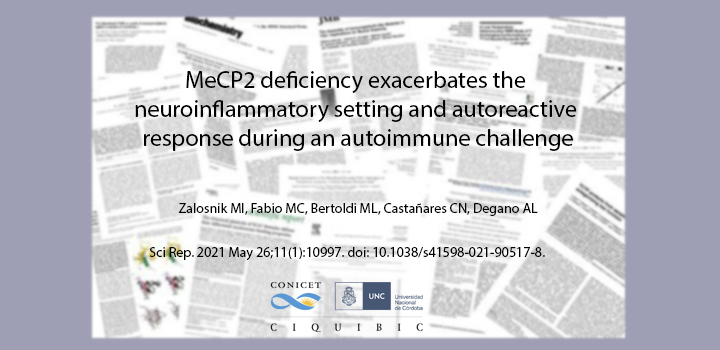
Zalosnik et al. Sci Rep. 2021

Nigra et al. Oxid Med Cell Longev. 2021
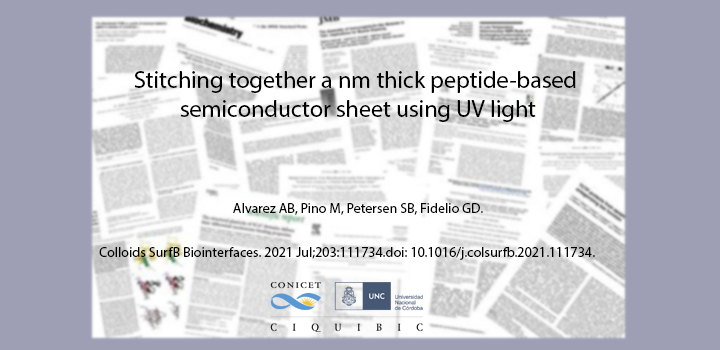
Alvarez Bolaño et al. Colloids SurfB 2021
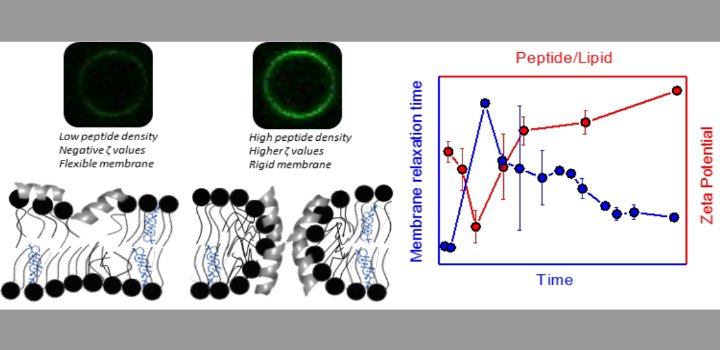
Alvares et al. BBA Advances 2021

Nocelli NE et al. helion. 2021

Lardone and at. JBC 2021

Wagner et al. FASEB J. 2021

Vilcaes et al. J. Neuron. 2021
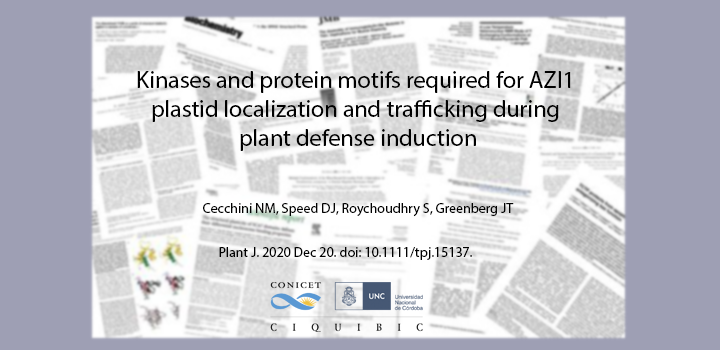
Cecchini NM et al. Plant J. 2020

Guido ME et al. 2020. Cell Mol Neurobiol
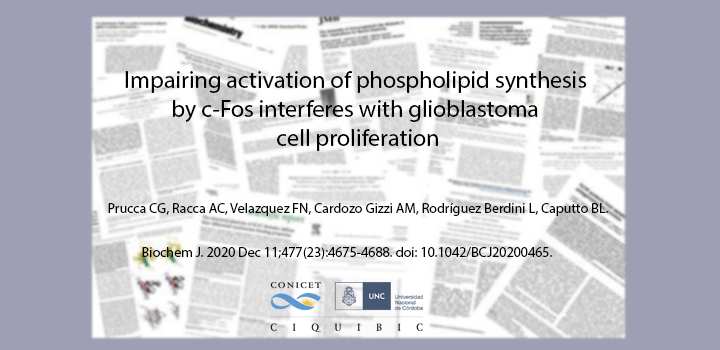
Prucca CG et al. Biochem J. 2020

Andrea G Albarracín Orio et al. Commun Biol. 2020
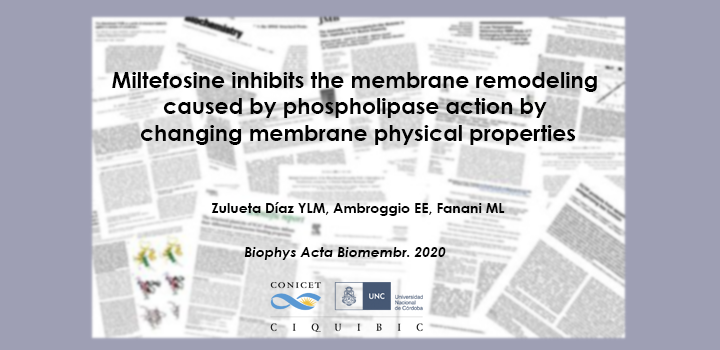
Zulueta Díaz AND BBA-Biomem. 2020

Romero J. Arch Biochem Biophys. 2020
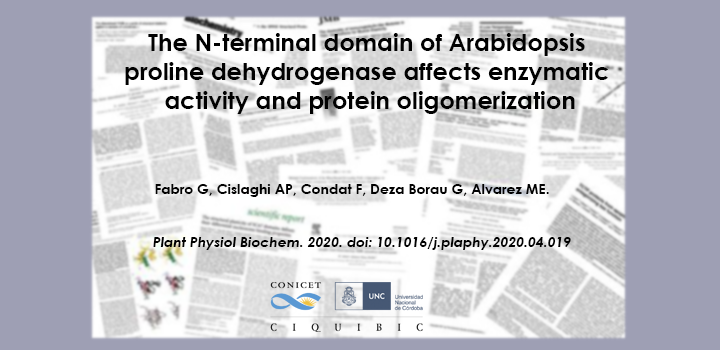
Smith et al. Plant Physiol Biochem. 2020
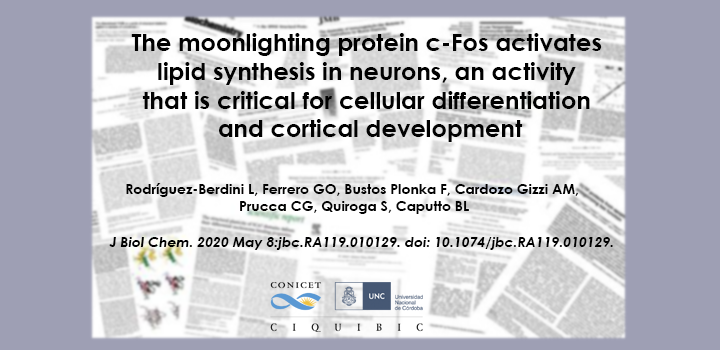
Rodríguez-Berdini et al. J Biol Chem. 2020

Colque CA et al. Antimicrob Agents Chemother. 2020
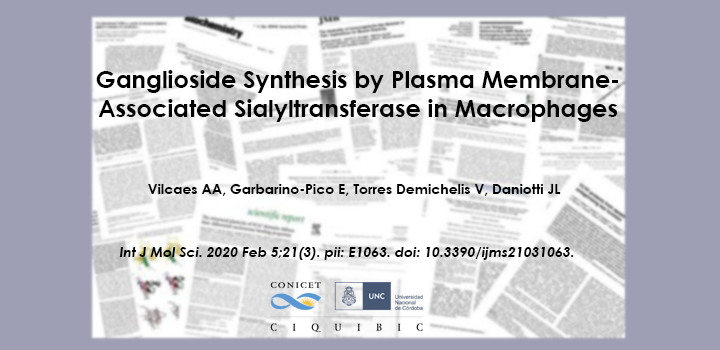
Vilcaes et al. Int J Mol Sci. 2020

Cardozo Gizzi et al. Nat Protoc. 2020
Simultaneous observation of 3D chromatin organization and transcription at the single-cell level and with high spatial resolution may hold the key to unveiling the mechanisms regulating embryonic development, cell differentiation and even disease. We recently developed Hi-M, a technology that enables the sequential labeling, 3D imaging and localization of multiple genomic DNA loci, together with RNA expression, in single cells within whole, intact Drosophila embryos. Importantly, Hi-M enables simultaneous detection of RNA expression and chromosome organization without requiring sample unmounting and primary probe rehybridization. Here, we provide a step-by-step protocol describing the design of probes, the preparation of samples, the stable immobilization of embryos in microfluidic chambers, and the complete procedure for image acquisition. The combined RNA/DNA fluorescence in situ hybridization procedure takes 4–5 d, including embryo collection. In addition, we describe image analysis software to segment nuclei, detect genomic spots, correct for drift and produce Hi-M matrices. A typical Hi-M experiment takes 1–2 d to complete all rounds of labeling and imaging and 4 additional days for image analysis. This technology can be easily expanded to investigate cell differentiation in cultured cells or organization of chromatin within complex tissues.
Authors: Cardozo Gizzi AM, Espinola SM, Gurgo J, Houbron C, JB plug, DI Cats, Nollmann M.

Ruggiero et al. Immunol Cell Biol. 2020
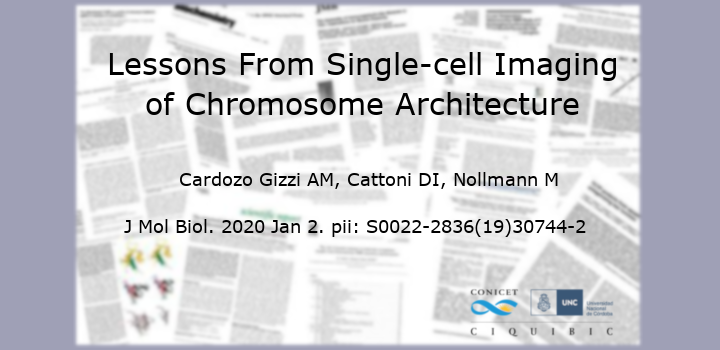
Cardozo Gizzi A. et al. J Mol Biol. 2020

Chumpen S. et al. Biosci Rep. 2020

Malcolm M. et al. Front Cell Neurosci. 2019

Zulueta Y. et al. Colloids Surf B Biointerfaces. 2020

Curtins JA et al. Biochem J. 2019

Lic. Antonella Colque will make a stay in Denmark
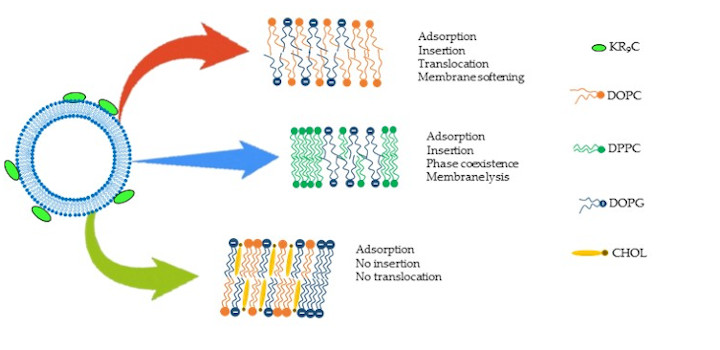
Crossio M. et al. Biomolecules. 2019
El mundo de los productos está en constante evolución, y cada año surgen nuevas tendencias que marcan el rumbo de la industria. En este artículo, exploraremos las tendencias de productos que se espera que sean populares en el 2024.
Si estás interesado en estar al tanto de las últimas novedades en productos, te recomendamos visitar el siguiente enlace: Trending Products 2024. Allí encontrarás una selección de los productos más populares y en tendencia.
La tecnología sigue avanzando a pasos agigantados, y en el 2024 se espera que haya una serie de productos innovadores que revolucionarán diferentes industrias. Desde dispositivos electrónicos más inteligentes y eficientes hasta avances en inteligencia artificial y realidad virtual, el futuro de la tecnología se ve prometedor.
Cada vez más personas están preocupadas por el impacto ambiental de los productos que consumen. At 2024, se espera que los productos sostenibles y respetuosos con el medio ambiente sean tendencia. Desde productos fabricados con materiales reciclados hasta opciones de energía renovable, la conciencia ambiental será una prioridad para muchos consumidores.
La salud y el bienestar son temas que están en constante crecimiento, y en el 2024 se espera que haya una mayor demanda de productos relacionados con el cuidado personal y la salud. Desde dispositivos de seguimiento de la actividad física hasta productos naturales y orgánicos, los consumidores estarán buscando opciones que les ayuden a mantenerse saludables y en forma.
La moda y el estilo de vida también seguirán siendo tendencia en el 2024. Se espera que haya una mayor demanda de productos que reflejen la individualidad y el estilo personal de cada persona. Desde ropa y accesorios únicos hasta productos para el hogar con diseños innovadores, la moda y el estilo de vida serán áreas en las que los consumidores buscarán expresarse.
In recent years, ha habido un aumento en la preocupación por la alimentación saludable y consciente. At 2024, se espera que esta tendencia continúe, y los consumidores buscarán productos que se ajusten a sus necesidades dietéticas y preferencias alimentarias. Desde alimentos orgánicos y sin gluten hasta alternativas veganas y vegetarianas, la alimentación consciente será una prioridad para muchos.
A medida que nos acercamos al 2024, es emocionante pensar en las nuevas tendencias de productos que se avecinan. Desde avances tecnológicos hasta productos sostenibles y opciones saludables, el futuro de los productos se ve prometedor. Si quieres estar al tanto de las últimas tendencias, no olvides visitar https://daltxrealestate.com/trending-products/.
¡No te pierdas la oportunidad de descubrir los productos más populares y en tendencia!
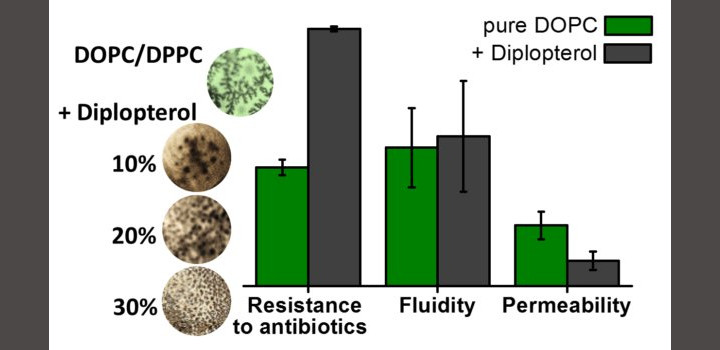
A Mangiarotti. et al. BBA-Biomembr. 2019

Monday 16December 2019 to12:30hs– Integrative Building Auditorium. FCQ.